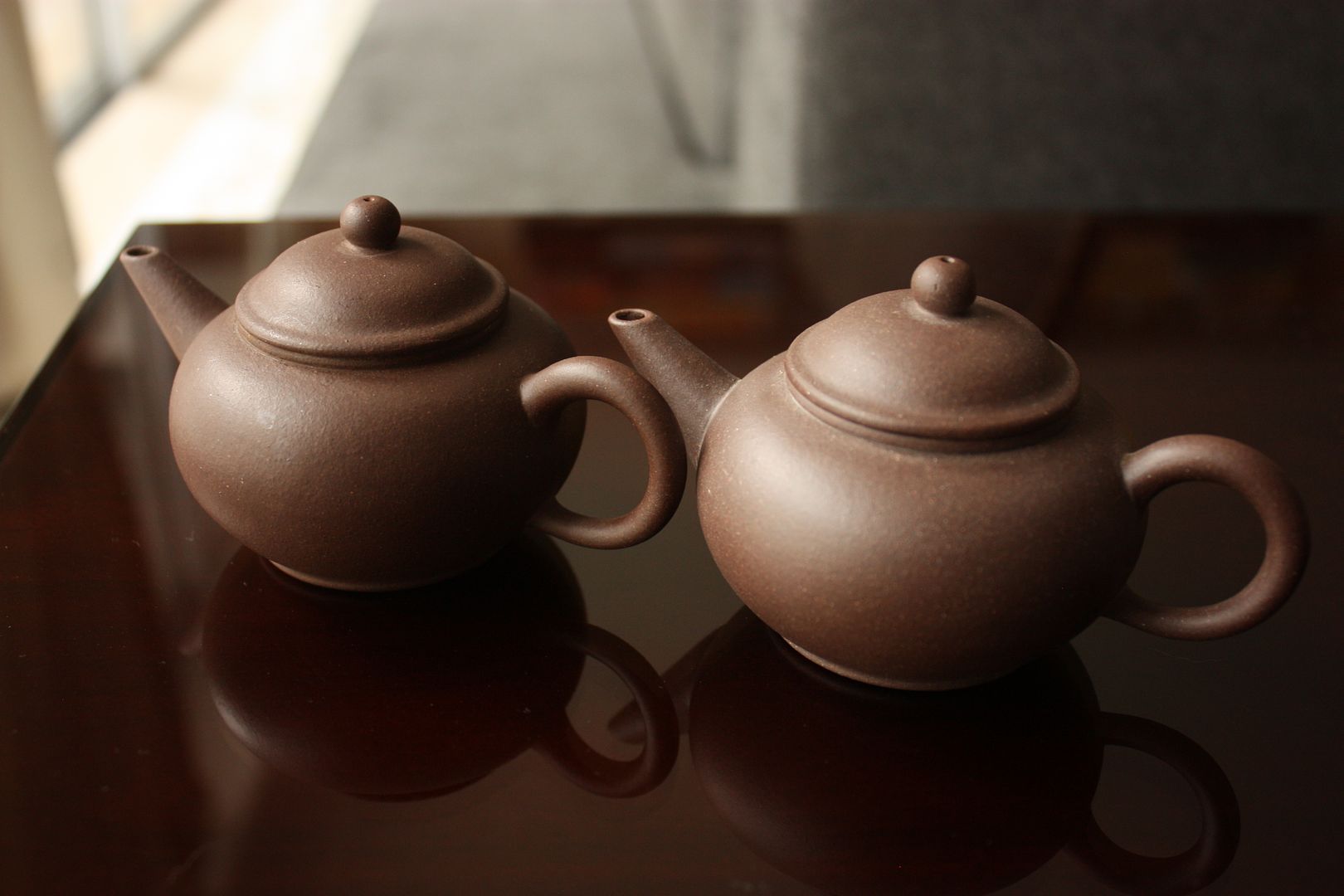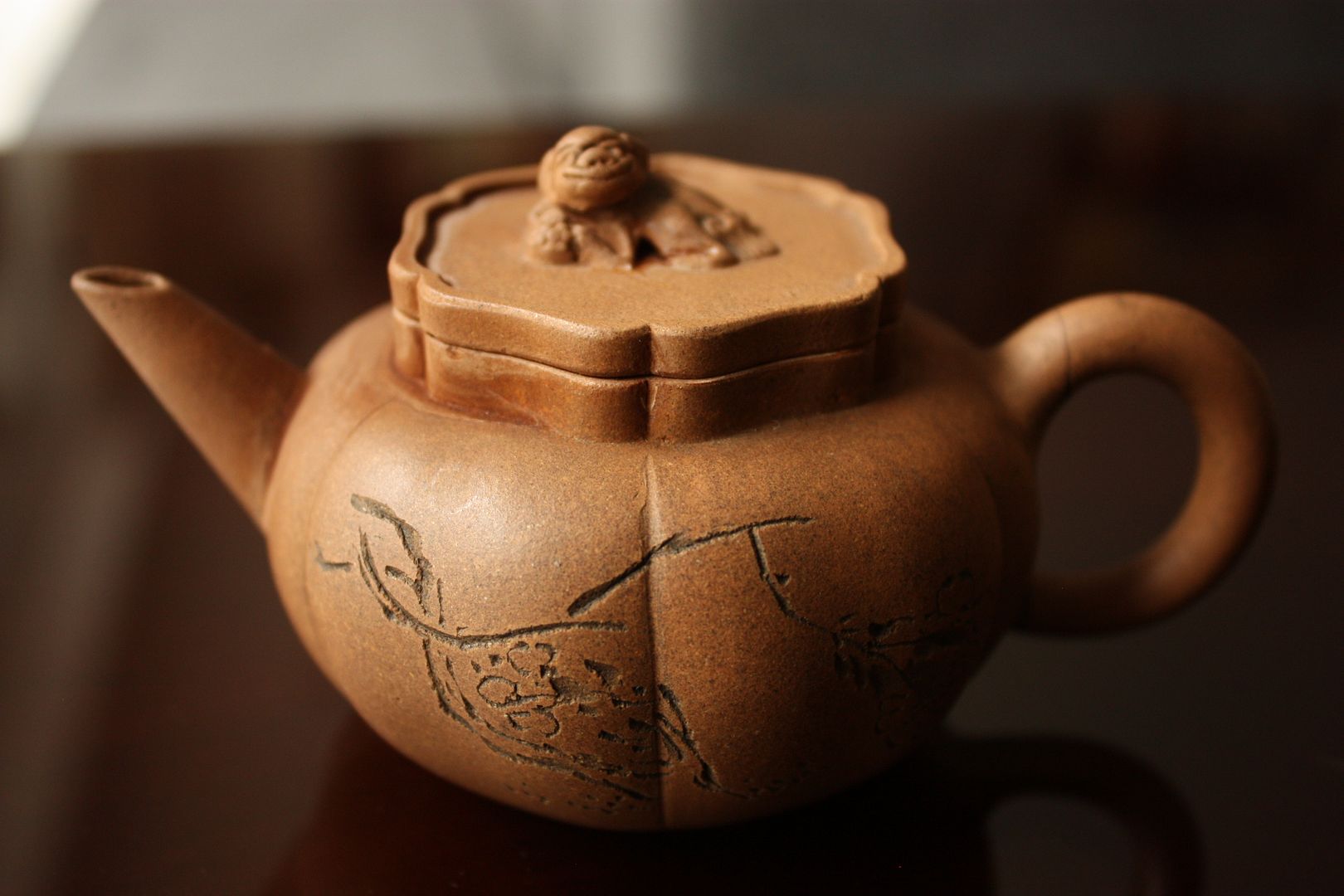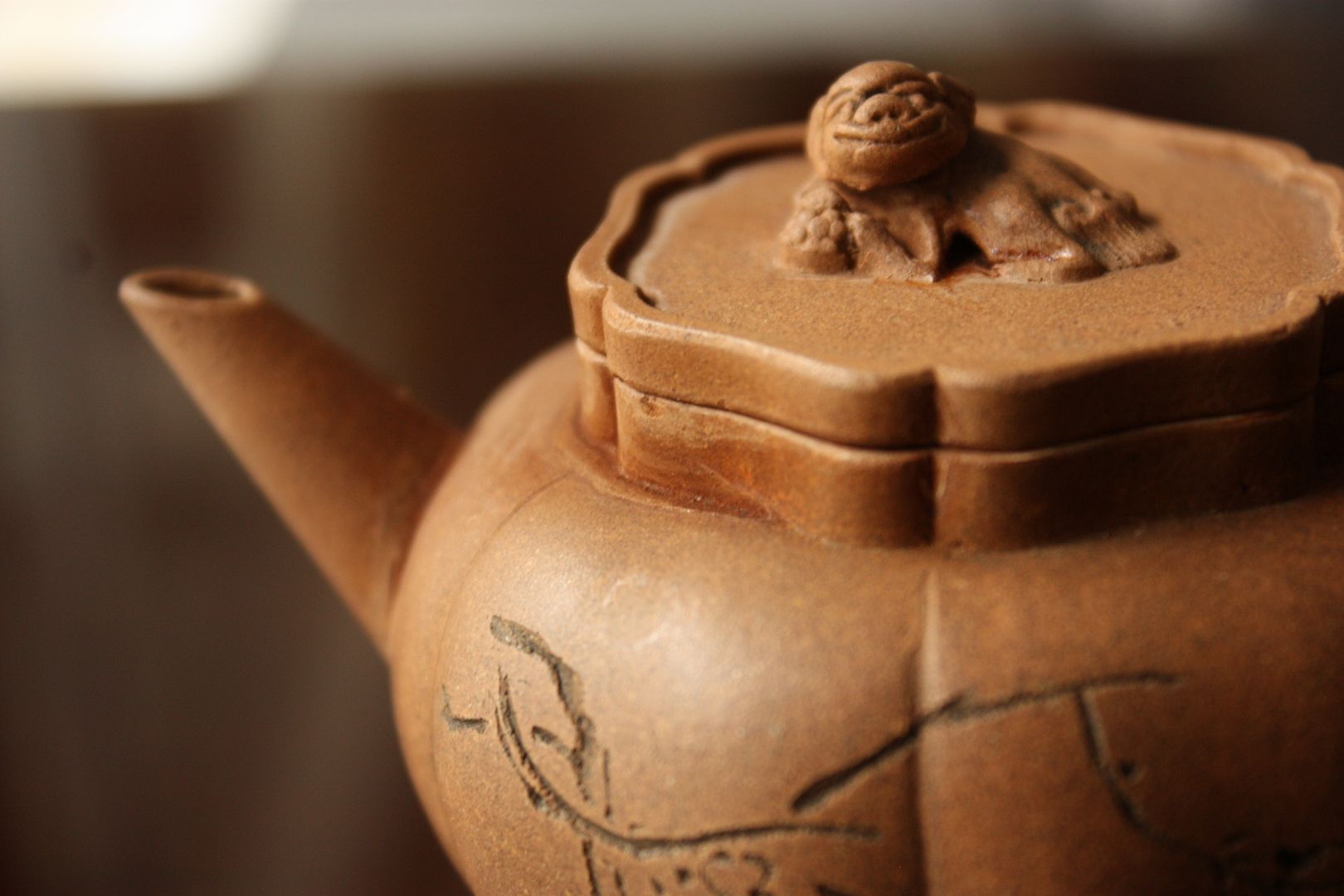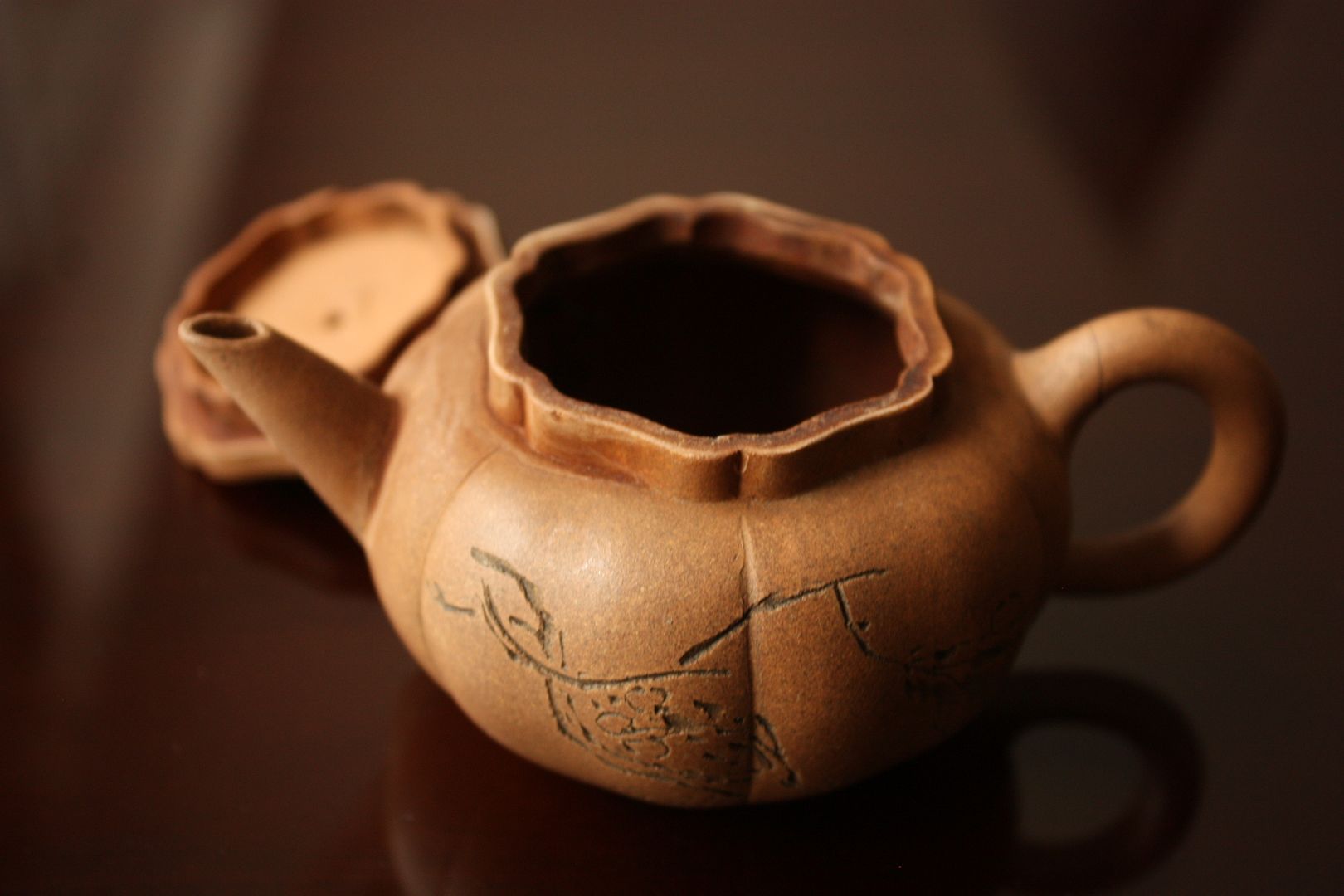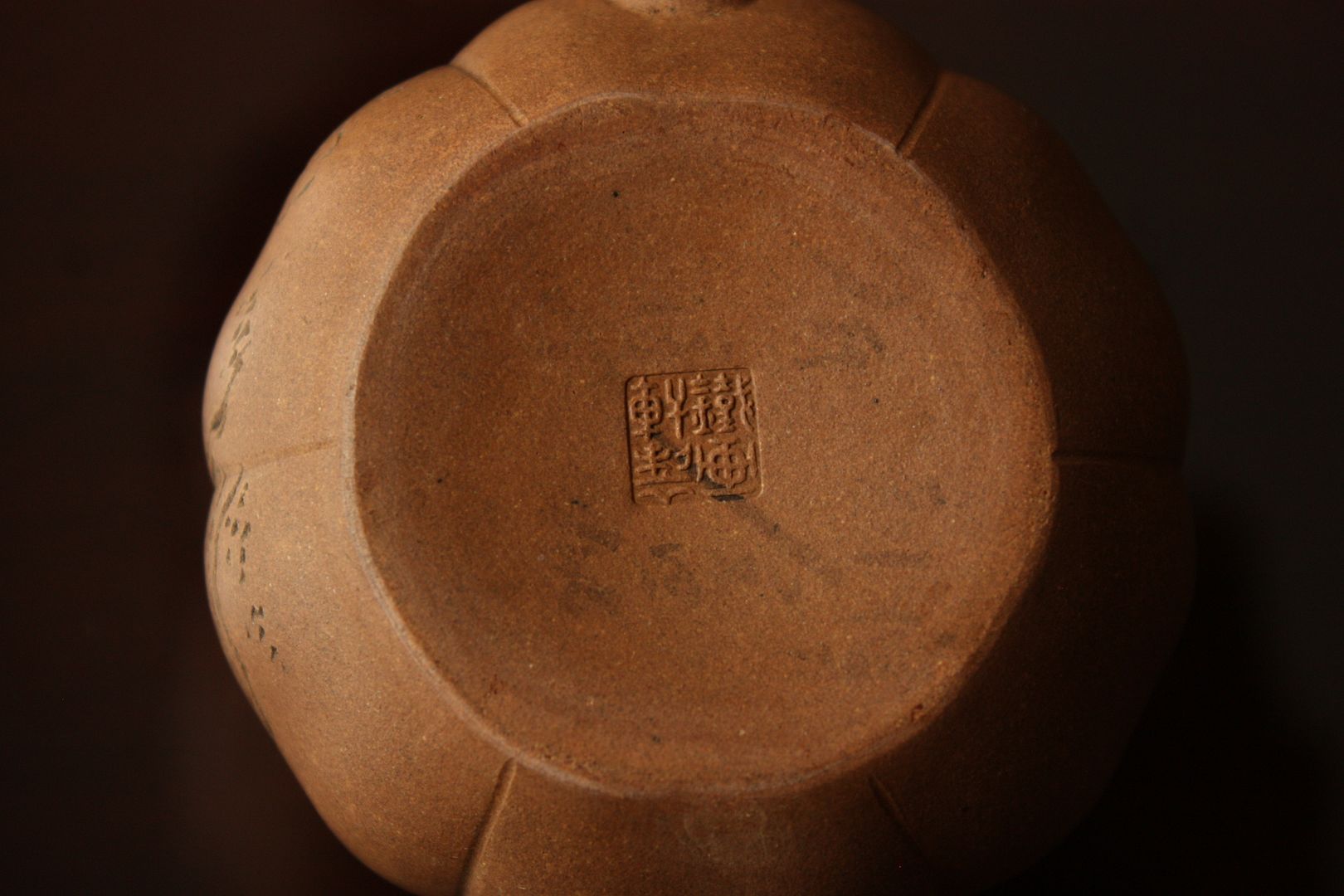There’s something about slowly using a yixing pot, and the accumulation of a patina after extensive use. I bought a group of five shuipings recently at a local shop, and have only been using one. After using it for no more than six or seven times, the one I use already looks different from the rest – its colour has changed a bit, and the surface seems smoother.
It’s not obvious – given the lighting and the inherent limitations of my poor photographic skills – that they’re all that different. The one on the left, however, is the one I’ve been using, while the one on the right has never seen any tea. I suspect at least initially, what happens is that the initial seasoning and usage of the pot washes away much of the residue of manufacturing. Also, some of the particles that may be attached to the surface loosely are also removed after having water poured all over the body of the pot. After a while, you have the patina building up, so much so that it forms a distinct surface on the pot itself.
Then there is the natural staining that happens over time, and which is hard to replicate otherwise. Fake pot dealers will normally try to mimic this by using all kinds of stuff – soy sauce, ink, or shoe polish. None quite work and will always look fake, lacking the natural lustre of tea. My lion pot, for example, was really dirty when I bought it. I cleaned it. Then, after a few years of use, it is now dirtier again – but at least this time I know it has been soiled by nothing other than tea stains.
I don’t really believe in spending too much time polishing my pots or rubbing them much – I just let the patina show up naturally, through use. I don’t even pour much tea at all on my pots. Eventually, with use, the pots will start to change and age. That’s part of the fun of using yixing pots, and with pictures, you can really see the changes that take place over time.
